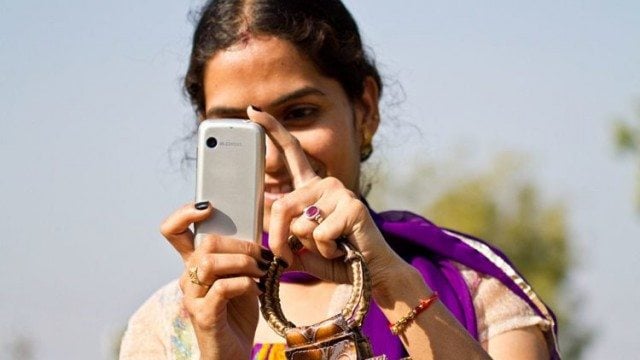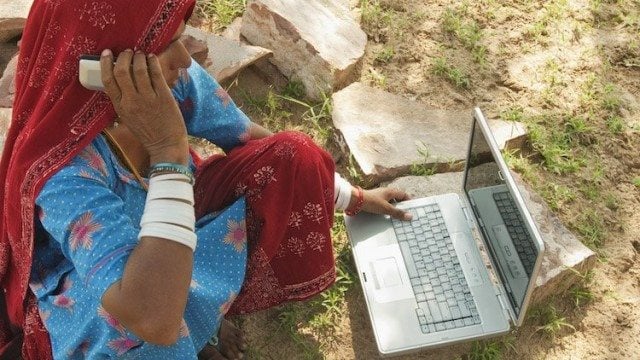The gender gap means that the internet of things is not helping women as much as it could

The Wall Street Journal’s report on gender gap between male and female mobile users in India – 1.5X as many men own a cellphone than women – shows how dependent wireless access is on cultural and economic factors. India is by no means alone in this regard, but the disparity is striking given how much emphasis is being put into bringing the country online in the next few years.
Overall, statistics are improving for female access to mobile devices, apps, and e-government or e-commerce services. The Economic Times notes that women are a much larger percentage of e-commerce users than two or three years ago. The reason that they were not a targeted demographic before is apparently because they had much less access to the internet, and that has changed since.
Also Read: Why the funnel system isn’t cutting it for your mobile app
But as industry association GSMA noted in its 2015 “Connected Women” report, “Women are moving up the digital ladder at a slower pace than men” in a number of emerging wireless markets, India included. There, internet usage by female mobile users is low compared to men since women, especially women who are unfamiliar with ICT and lack disposable income, do not usually own devices that are Wi-Fi enabled.
The study found that in general, the lower-end phones wives and daughters made do with lacked airtime credit, limiting access mainly to other family members and call receiving. Even then, they did not have reliable access to these devices since they were shared among other male relatives, too. Firms such as Micromax (India) and Telenor (Norway) are working to remedy this, according to the Journal, by offering improved product lines for female callers.

Indian woman using her budget cell phone to take an image of the photographer in an indiscreet way. Morten Falch Sortland
Demand restrained by social pressure, education
There are a range of domestic ICT services specifically available to women, like the FightBack personal security app, the Mahila E-Haat e-commerce platform for female entrepreneurs, the Helping Get Women Online initiative from Google, the Bharatiya Mahila (“Indian Woman”) Bank, and the e-Ladli financial aid program for schoolgirls. But these may not always be welcome in a socially conservative milieu. (This is also true for minorities and people descended from “lower-caste” families, and for more general e-governance apps that detail property transactions, marriages, and travel records.)
Also Read: Report: APAC mobile shoppers use the platform more frequently — but are less satisfied with it
Since 2015, in fact, several towns in India have, “banned girls [under 18] and single women from owning mobile phones”, according to Reuters. This effectively made husbands’ and fathers’ the arbiters for mobile ownership, even though some exceptions were made for students. Violations are punishable by fines.
There are also variables outside of the control of mobile providers, like access to stores and offices where information about apps or devices is posted, have a big impact. A 2011 study on e-governance in rural India, the Common Service Center (CSC) program, found that awareness of the centres and the rural ICT options they provided was generally low, especially among, “Marginalised communities such as people with disabilities, women and scheduled caste villagers”. As the Journal notes, awareness of mobile services is greatest among urban youth in contrast to rural and adult populations.

Rural woman talking on a mobile phone and using a laptop, Jaipur, Rajasthan, India Exotica.im/UIG via Getty Images
Privacy issues both open and close doors
Yet, clearly, there was demand among the women for greater participation and access, as the CSC study found that in the villages, “Women in general were observed to be quite active in raising awareness about social issues such as alcoholism among their men-folk, need for community toilets, [and] spread of computer-literacy among their children” (emphasis added). And the GSMA found that, “At least 68% of female respondents in every sample country report that they feel (or would feel) safer with a mobile phone.” FightBack’s popularity in India being further evidence of that since it was designed as an anti-harassment tool.
One issue, often overlooked outside of India as well, is privacy. Apps that ask for personal details about family histories need to have good privacy controls lest women (and also men) be afraid to disclose information in them that could go public and be used against them, such as relatives’ caste-standing or what were privately-kept religious and political affiliations.
Also Read: How mobile operators are filling the e-payments gap in emerging markets
On the flip side, were women able to safely carry out more financial and land transactions, technical development would be an empowering force since the privacy afforded would strike a blow against traditional male controls over these inputs.
The Journal‘s report, as well as the data on India’s CSC drive, offered hope in this regard by pointing out the untapped market potential driving further integration of women into the digital economy. And, since mobile awareness is so lacking in general across certain parts of the country, educational programs could help improve both male attitudes and female ICT skills.
—
The article For women in India, mobile’s promise still elusive first appeared on Geektime.
Image Credit: sjenner13 / 123RF Stock Photo
The post For women in India, mobile’s promise still elusive appeared first on e27.